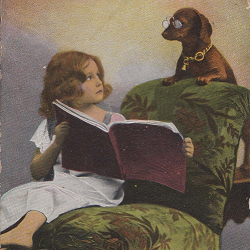Edwardian Postcards
Be kind to grannie..."

The early British postcard is a fascinating multimodal communications technology. In the heyday of the postcard during the Edwardian age (1901-1910), it offered an opportunity for the exchange of everyday messages with pictures at very low cost. This opportunity was not to be available again until the contemporary digital revolution. Up to six deliveries a day were being made in major cities and 6 billion cards were sent in the period.
Apart from the light shed on writing practices of the Edwardians, this project revealed much about the travel patterns, social networks and concerns of the age. It investigated the mobilities of the postcard today and made comparisons with contemporary social media. Many of the postcards were donated. It was a Citizen Humanities project, encouraging public participation in the research helping the project to progress the research to wholly new levels.
The project was directed by Dr. Julia Gillen, Reader in Digital Literacies and Director, Lancaster Literacy Research Centre. The project was begun by Julia Gillen and Nigel Hall, Emeritus Professor of Literacy Education, Manchester Metropolitan University. Former Research Associates were Dr. Jane Demmen, Dr. Joanne Thistlethwaite and Dr. Amanda Pullan. From 2016 onwards we have worked with Dr. Adrian Gradinar. There were also undergraduate students working alongside us, such as Sol Rodriguez Lyon and Lara Bland in 2019.
The project has previously been funded by the Bowland Trust, the Friends Programme of Lancaster University, the Lancaster University Public Engagement with Research Leadership Group, the Arts and Humanities Research Council Cultural Engagement Fund, the Arts and Humanities Creative Exchange Programme and the Faculty of Arts and Humanities Lancaster University Impact Fund.
The collection consists of 3,000 postcards which were acquired over many years by Dr. Julia Gillen and kindly donated to the Library in July 2021. They are now digitised, and the originals owned and housed with the Library.
The collection is also accessible from the original project website.
